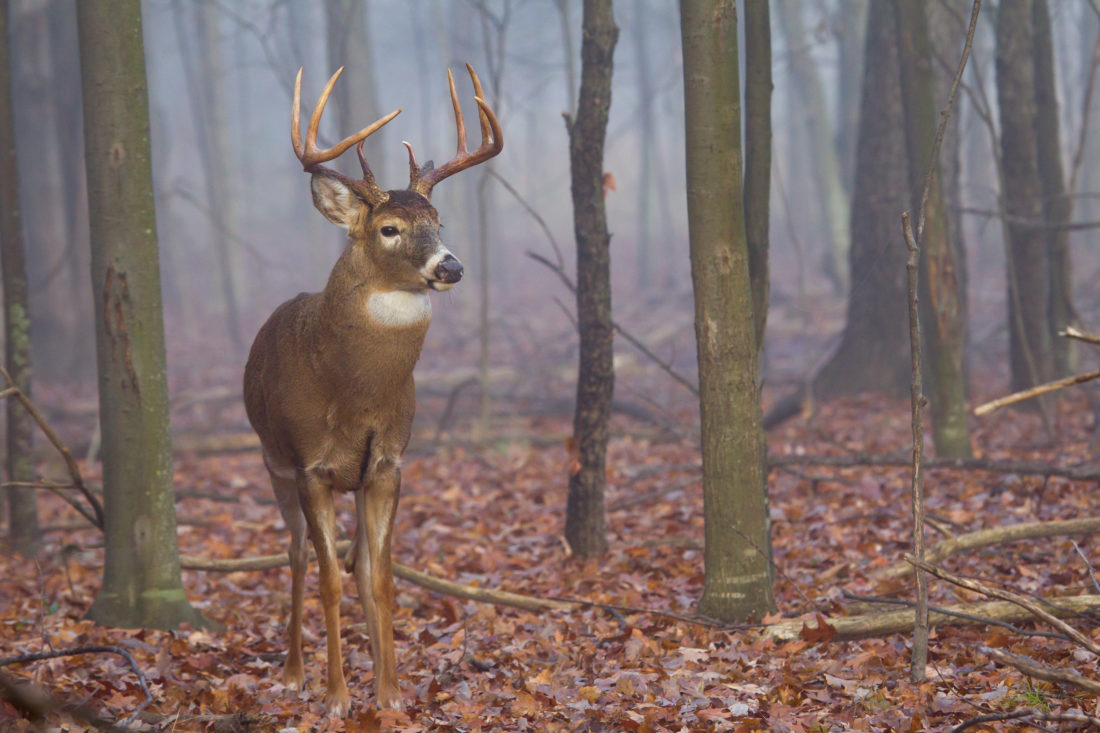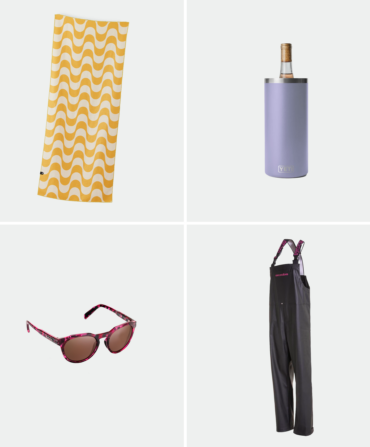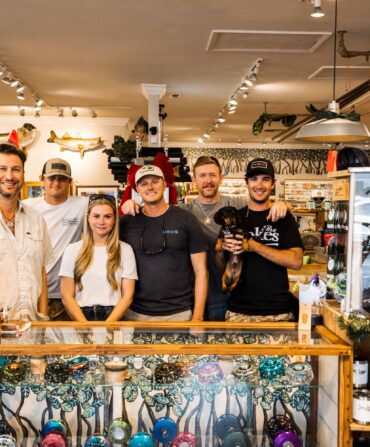Over the last year, three deer in North Carolina tested positive for Chronic Wasting Disease (CWD). The finding was greeted with dread by hunters. The state is now one of at least twenty-nine states that face a future of dealing with one the most insidious diseases to vex game animals. In the South, Alabama, Arkansas, Louisiana, Maryland, Mississippi, Tennessee, Texas, Virginia, West Virginia, and now North Carolina all have confirmed cases. And while the disease is still limited in many areas—in Alabama and Louisiana, only one county has reported a CWD-infected deer—its presence means deer hunters should familiarize themselves with deer-handling practices and possible regulatory changes that are put into place once CWD is discovered in an area.
Similar to mad cow disease, CWD can be transmitted directly from one individual animal to another, infecting white-tailed deer, mule deer, elk, and moose. First discovered in captive deer in Colorado in the 1960s, CWD was detected in wild deer in 1981. It is caused not by a parasite, bacterium, or virus, but by a self-replicating misfolded protein called a “prion,” which in addition to transmitting from animal to animal can also remain viable in the soil for many years. Deer infected with CWD turn emaciated, and they often lose interest in social contact with other deer and exhibit a lack of fear of humans. There is no treatment or cure, and it is always fatal to the animals. When unchecked, CWD can decimate deer populations.
In North Carolina, the reports ushered in a long-planned protocol for deer hunters, an approach to the disease that is similar to that of other states. The three CWD-positive deer were from Yadkin County and neighboring Surry County, in the northern foothills part of the state. The North Carolina Wildlife Resources Commission established Primary and Secondary surveillance areas in parts of Surry, Yadkin, Davie, Forsyth, Stokes, Iredell, and Alleghany Counties, with specific regulations on transporting and processing deer designed to blunt the spread of the disease. The commission developed a Cervid Health Cooperator Program, including taxidermists, meat processors, and stand-alone cooler sites around the state, so that hunters can deposit deer heads for CWD testing, free-of-charge.
As CWD continues to spread across the country, hunters both inside and outside known CWD surveillance areas should understand protocols for how to handle harvested deer. The good news is that, according to the Centers for Disease Control (CDC), “There is no strong evidence for the occurrence of CWD in people.” Still, wildlife officials take CWD very seriously, as should hunters, and the CDC recommends that deer that have tested positive for CWD not be eaten.
North Carolina’s guidelines are a good approach to consider, says Dr. Liz Rutledge, director of wildlife resources for the North Carolina Wildlife Federation and a coordinator of the N.C. Hunters for the Hungry program. “When hunters follow their state’s testing and management protocols,” she says, “there’s no reason to hesitate in taking part in our long-standing traditions of deer hunting or consuming venison that has been properly tested.”
For state-specific regulations and protocols, check with your state wildlife agency. Meanwhile, consider this checklist for hunters as you head into the woods this fall.
CWD Checklist for Hunters
● Know and follow state- and region-specific deer carcass movement regulations to reduce the accidental spread of CWD.
● If you see a deer that looks sick, report it to your local state-agency biologist or state wildlife management agency.
● Wear disposable gloves when processing hunter-harvested deer.
● When boning out the meat, use a separate blade to remove the head since CWD prions accumulate in the brain and spinal column.
● It’s best to bury the deer remains where you harvest the animal. Otherwise, dress the deer where it was harvested and double bag the remains to dispose of at a lined landfill; however, any movement of infected remains creates a risk of spreading prions to a new location.
● Clean your instruments, gloves, and boots in a half-Clorox, half-water solution, and wash your hands thoroughly after processing the meat.
● If you are taking your deer to a commercial processor, be sure your deer is processed individually.
● Do not consume the brain, eyes, tongue, spleen, tonsils, lymph nodes, or spinal cord of the deer.
● Not all states follow the same protocols, but hunters in CWD-positive states should consider submitting their hunter-harvested deer heads for testing if it’s available. Many states offer CWD testing free of charge. Typically, you’d deliver the deer’s head to an agency drop-off site for testing.
● Wait until you receive negative test results before consuming the venison. If the test result comes back positive, do not consume the meat.
Follow T. Edward Nickens on Instagram @enickens.








